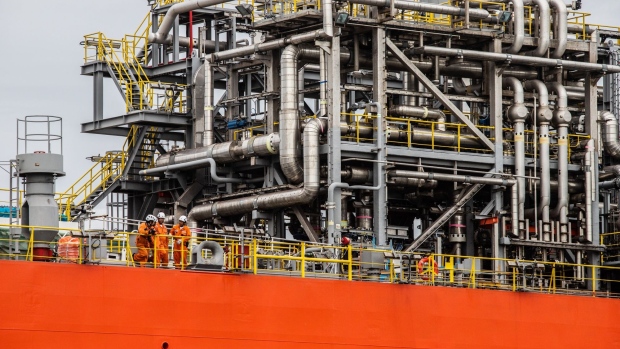Dec 19, 2022
Europe’s Gas Price Cap May Keep Lid on Volatile Asian LNG Market
, Bloomberg News

(Bloomberg) -- Europe’s move to cap natural gas prices threatens to curb supply to the region and intensify its energy crisis.
European nations this week reached a deal to put a ceiling on gas prices, ending months of political wrangling over whether to intervene in its energy sector. But while the mechanism may help prevent extreme price swings, it may leave the region vulnerable to insufficient supplies and stronger competition from Asia.
A price ceiling without an associated cap on demand risks making Europe’s gas supply deficit worse by encouraging consumption, Goldman Sachs Group Inc. analysts including Samantha Dart said in a report published Monday. That could tighten global supply next year and, in a worst-case scenario, force governments to ration gas.
Further, the cap will make it more difficult for the region’s importers to significantly increase bids to secure liquefied natural gas supply. The industry has warned that LNG cargoes could favor Asia if prices there are higher than the caps in Europe, just as China’s demand awakens with the easing of Covid Zero restrictions.
“China’s ability to revamp growth is an important question mark,” said Frank van Doorn, head of trading at Vattenfall Energy Trading GmbH. Europe’s price cap isn’t affecting the market now, but it will make trading more costly, he said.
Competition With Asia
LNG importers in Europe and Asia compete for supply from the same exporters, such as the US and Qatar. One benefit of the cap is that it could reduce the likelihood of runaway bidding wars — and price spikes — for spot shipments between the two regions. Asian LNG prices closely follow moves in Europe, with the two markets becoming closely linked over the past year.
The European measure, which is set to take effect in February, could be withdrawn if there are “adverse effects,” with policymakers saying the ceiling is designed to attract global suppliers. And the cap doesn’t extend to over-the-counter trading, which may result in a large shift from exchanges to the less transparent market for privately negotiated contracts.
“As long as you stay on par with LNG prices, you could still attract supply,” said Niek van Kouteren, lead trader at Dutch energy company PZEM NV. “I’m more afraid of increased margin requirements and, as such, a lot less liquidity, and a shift from exchanges to over-the-counter trading.”
Capping prices “destabilizes the market,” said Mohamed Arkab, the energy minister for Algeria, Europe’s third-biggest gas supplier. In a speech in Algiers Tuesday, he said “open, transparent, unrestricted and non-discriminatory gas markets are more than a necessity.”
Meanwhile, Equinor ASA, Europe’s biggest gas supplier, reiterated Tuesday that the price cap is unlikely to affect the Norwegian producer’s exports.
The EU has agreed to cap gas prices at €180 per megawatt-hour, or roughly $56 per million British thermal units. For the tool to be triggered, benchmark contracts must be above the ceiling for three days and also above LNG prices to a certain degree. If the cap had been introduced at the start of this year, it would have been used for about 40 days in August and September.
Asian LNG prices traded above $56 per million Btu for about two weeks between August and September.
The price cap is being celebrated by several Asian LNG importers, which fell victim to the knock-on effect of surging European rates after Russia invaded Ukraine, according to traders. Spot prices in Asia this year swung between $19 to a record $85, forcing several cash-strapped importers to halt plans to procure supply.
--With assistance from Elena Mazneva.
(Updates with traders’ comments in fifth, eighth paragraphs)
©2022 Bloomberg L.P.






